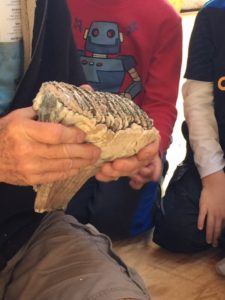Pleistocene Park: A Large-Scale Restoration, Part II
Last week’s blog introduced Pleistocene Park and concluded with a hint that mammoth were an especially important component of the former Arctic grassland steppe ecosystem. Up until a few years ago, I assumed that the Park already had a few Asian elephants (their nearest living relative), selected for cold-tolerant traits like small ears and more fur, and were being studied with regard to uprooting trees and trampling shrubs, moss, and lichen, and spreading their quickly made compost, which favors quick-growing grasses. I figured that the researchers were already on their way to having a surrogate for the mammoth.
But recently an often-fatal virus has been raging through Asian elephants worldwide, especially the young ones, and the species might actually be endangered. It would be bad press to have elephants die at Pleistocene Park and perhaps Sergey and Nikita chose not to risk it, or chose not to advertise they have any.
But scientists around the world have become intrigued about the possibility of resurrecting the mammoth. It is now not just a Jurassic Park-type novelty, but potentially a valuable member of a resurrected northern grassland steppe community. So expeditions from major universities have gone out to dig up well-frozen mammoth carcasses in the far north, some of them still have hair, dried blood, and undigested dinners. Everyone seems to acknowledge that frozen DNA cannot possibly survive intact since the end of the Ice Age, but they are proceeding to tease and tinker with it anyway.

The conical cusps of the mastodon’s tooth interlock upper and lower and serve to efficiently crush twigs and small branches.
The boldest assertions are those of George Church, one of the most highly ranked geneticists in the USA (Harvard). He intends to deal with the virus on behalf of all Asian elephants. And to recreate an animal close to the mammoth, not by cloning DNA from a carcass, but by remodeling the Asian genetics in the lab and growing a fetus in the lab without a surrogate mother. If anyone else had announced these goals, they would have been ridiculed by colleagues, but with George, the response is more to get out of his way.

The tightly folded layers of enamel of a mammoth’s tooth produced a durable wearing surface for the steady grinding of grasses and forbs.
And the Zimov’s are getting results at the Park. The turnaround of plant succession, starting with a grassy scrubland, is especially quick. If animals eat and trample the shrubs severely, the grasses dominate within about three years. But if there is no follow-up herbivory, within another 4-6 years the shrubs again dominate and suppress the grass to a minor component. And temperature measurements show that in heavily grazed areas, the winter grass cover is thin and the snow gets compacted, both reducing the insulating value of the surface. And where winter is long and can hover around -40 to -60 for months, the permafrost penetrates deep enough that it doesn’t all thaw during the next short summer.
Be a bit cautious if you read about this experiment in popular magazines or electronic formats. It is a long flight to get there from anywhere, in a very small plane, and when bleary-eyed reporters disembark, they get shuttled around for a few days while sampling vodka, and get poured back on the plane and wake up several time zones away wondering whether it was all a dream.
I’ve been tracking this complex story for decades and hope my two brief blogs serve as a faithful introduction to the topic for you. If you wish to research this further yourself, a good place to begin is with Sergey’s own words in Science Magazine. For an older story about how this got started, try Richard Stone, Science Magazine.
Tags: habitat restoration, Lon Drake, Pleistocene history, Sergey Zimov

